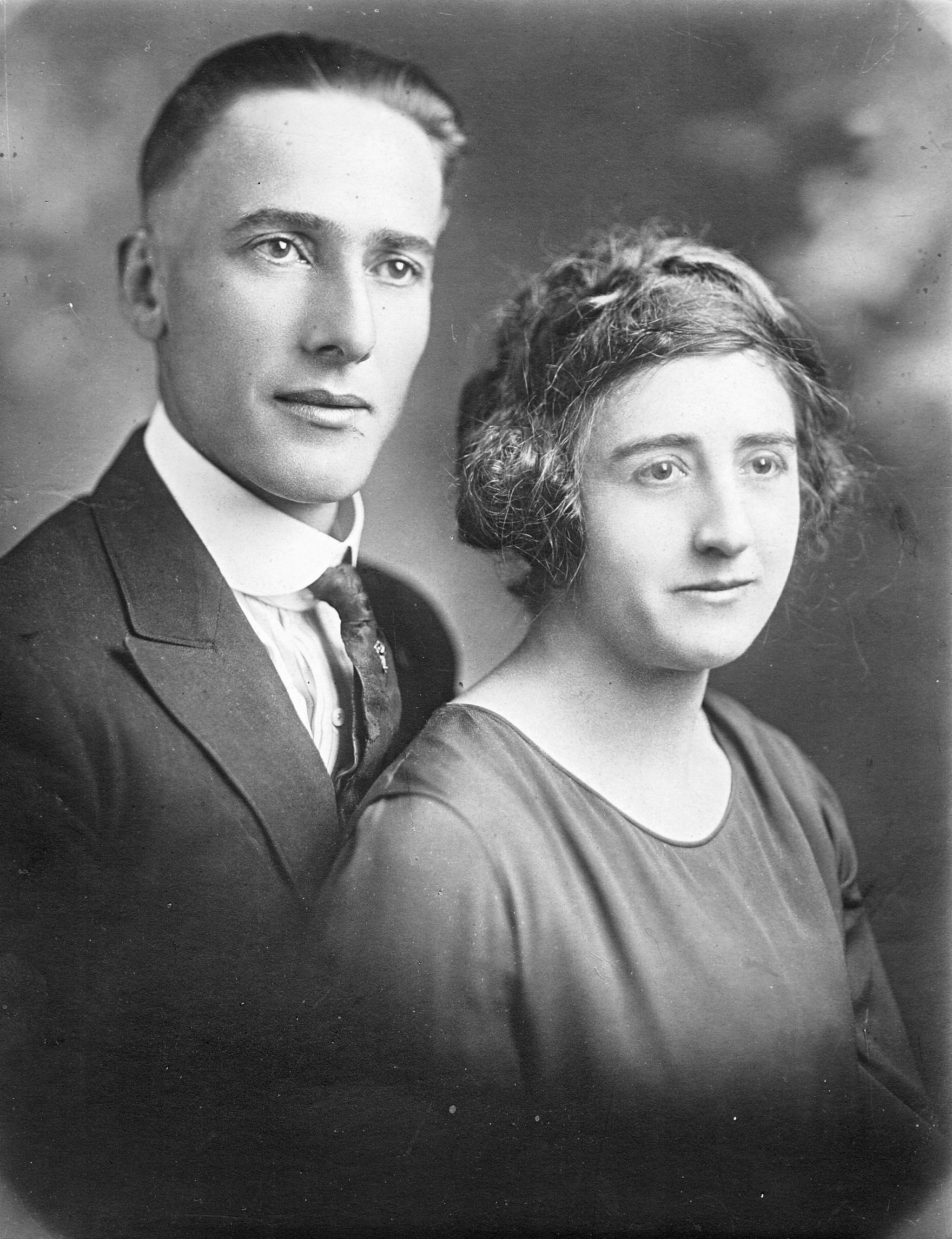
Joseph Galliano emigrated from Italy in 1891 and lived on the coast of California prior to arriving in Clovis in 1894. The family settled at the corner of 8th and DeWitt. They moved in 1900 to a ranch in the Jefferson district. The Jefferson School District was established in 1884 with boundaries of Bullard, Shields, Peach and Highland.
Joseph and his wife Lucy had four children, all born in California: Julius, Antonetti, Josephine and Fred. In 1935, Joseph moved to a ranch at 2643 Copper Ave. to be with his sons. Joseph died in 1937 at the age of 72.
Julius (1893-1967) attended Jefferson Grammar School and one year of Clovis High School. He worked at his father’s ranch until he joined the Army during WW I.
The 1937 telephone directory indicates Julius lived on Copper Ave. His listed number: 105-F-2, which indicated it was a “party” (not private) line. It is believed he purchased the land in 1918. He would partner with his brother Fred on the Copper 75 acre farm.
Flora Edith Matthews (1895-1973) married Julius in 1919. They had no children. Her father Robert John Matthews was born in 1849 in Johnson County, Missouri. He married Florilla Nichols on 29th of November, 1872. The family, including Robert’s mother-in-law Josephine Nichols, arrived in Clovis between 1901-1906. The family raised grapes.
Flora’s brother Theodore Mathews (1887-1967) worked at the big cattle ranches in the foothills. He was described as being of “small string bean stature, a genuine cowboy and a man of few words.” Upon retirement, he moved to a small, one-room cabin set out in the middle of the Galliano’s vineyard.
Theodore was a great card player. He would frequently walk into Clovis to play cards at one of the card rooms on Clovis or Pollasky avenues.
Ralph Mathews (1892-1940) was the brother of Flora and Theodore. He worked as a muleskinner. He drove a mule team wagon hauling timber down the old Tollhouse grade from Shaver Lake (1918-1919) to the sawmills at Tollhouse. He farmed on east De Wolf and continued using the same mule team to work his fields. Their property was lost during the 1933 as a result of the Great Depression.
Josephine Nichols’ eldest son Clark Nichols had arrived in Clovis 1896. Clark’s son Delbert Nichols was a raisin farmer for many years in the Ashlan area, near Clovis East High School.
Jube (Julius’ nickname for most of his life in Clovis) was active in the Clovis Rodeo Association and a 32 degree Mason.
He was commander of the American Legion Cecil Cox Post #147, 1932-1933. The unit was formed in 1919 and was named in honor of Cecil Cox, the first Clovis man killed in WW I. A 1921 report indicated there were 120 members and that the dues were 50 cents per month.
Jube was a member of the Farm Bureau for 40 years and would assist Al Biglione in creating the Clovis Fresno County Fair booth that would consistently win prizes for its produce and design. He also served as Fresno County assessor for over 15 years.
He was considered the best volunteer fund raising cook (noted for his beans) in Clovis. He was active in raising funds for the new Clovis hospital on De Witt (1965) that replaced the antiquated 1896 home that had been converted into the Clovis Sanitarium by Dr. Milton McMurtry in 1920.
Jube served on the Clovis Union High School Board from 1934-1946. He and Flora remained active in the Clovis community. They sold their portion of the ranch in 1957 and purchased a home in Tarpey Village.
The Galliano and Matthew families are a part of our rich heritage.








